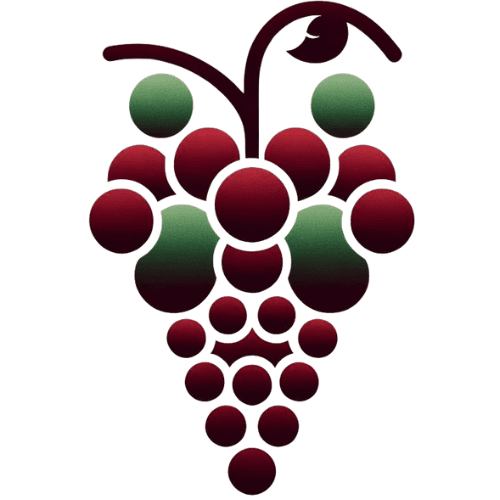6 Regional Differences in How Sangiovese is Used in Italian Cuisine
Sangiovese, the heart of Italian wine, takes on a myriad of culinary personas across the country's diverse regions. From coastal seafood pairings to hearty Alpine dishes, this versatile grape adapts to local flavors with chameleon-like ease. Discover how Sangiovese's character shifts from north to south, complementing everything from delicate risottos to bold southern specialties and even inspiring innovative urban fusion cuisine.
- Sangiovese Adapts to Regional Italian Cuisines
- Coastal Italy Pairs Sangiovese with Seafood
- Northern Risottos Embrace Lighter Sangiovese Styles
- Southern Cuisine Matches Bold Sangiovese Flavors
- Alpine Regions Utilize Sangiovese in Mountain Dishes
- Urban Centers Innovate with Sangiovese Fusion Cuisine
Sangiovese Adapts to Regional Italian Cuisines
Sangiovese, a versatile and robust red wine grape from Italy, manifests its charm differently across various Italian regions due to its adaptability to distinct local climates and terroirs. In Tuscany, where Sangiovese achieves its most renowned expression, it is often used in traditional Tuscan dishes. For instance, the grape's high acidity and tannic nature make it a perfect match for rich and fatty foods. A classic pairing is with "Bistecca alla Fiorentina," a thick, chargrilled T-bone steak seasoned simply with olive oil, rosemary, and garlic, which complements the bold flavors of Sangiovese wines like Chianti or Brunello di Montalcino.
Moving to Emilia-Romagna, Sangiovese finds a different culinary use. Here, the lighter, more fruit-forward styles of Sangiovese accompany dishes such as "Tagliatelle al Ragù," a pasta dish with a hearty, slow-cooked meat sauce. The wine's fruitiness and softer tannins blend seamlessly with the rich and savory flavors of the ragù, enhancing the dining experience. Regardless of the regional dish, Sangiovese consistently provides a pleasing contrast or complement, depending on the preparation and local culinary traditions. As such, it beautifully showcases the gastronomic diversity of Italy, highlighting how a single grape variety can adapt and thrive amid the rich tapestry of Italian regional cuisines.

Coastal Italy Pairs Sangiovese with Seafood
The coastal regions of Italy have a unique approach to pairing Sangiovese with seafood dishes. The salty sea air and abundance of fresh fish influence the local cuisine, creating interesting combinations with this versatile wine. Chefs in these areas often experiment with lighter styles of Sangiovese to complement delicate seafood flavors.
The wine's natural acidity can cut through rich fish dishes, while its fruit notes enhance the overall dining experience. Restaurants in coastal towns frequently update their menus to showcase these pairings. Visitors to these regions should make a point to try these distinctive coastal Sangiovese and seafood combinations.
Northern Risottos Embrace Lighter Sangiovese Styles
In Northern Italy, Sangiovese takes on a different role in the local cuisine, particularly in risotto dishes. The cooler climate produces lighter styles of Sangiovese, which chefs cleverly incorporate into their cooking. These wines are often used to deglaze pans or as a finishing touch in risottos, adding depth and complexity to the dish.
The subtle flavors of Northern Italian Sangiovese complement the creamy texture of well-made risotto without overpowering it. This regional approach showcases the versatility of Sangiovese beyond its traditional role as a table wine. Food enthusiasts should seek out Northern Italian restaurants to experience this unique use of Sangiovese in cuisine.
Southern Cuisine Matches Bold Sangiovese Flavors
Southern Italian cuisine embraces bolder flavors, and this is reflected in how Sangiovese is paired with local dishes. The warmer climate produces more robust Sangiovese wines, which stand up well to the spicier and more intensely flavored foods of the region. Chefs in the south often use Sangiovese in marinades for grilled meats or as a base for rich pasta sauces.
The wine's tannins and full body complement the hearty, rustic dishes typical of Southern Italian cooking. This regional approach highlights the adaptability of Sangiovese to different culinary styles. Food lovers should explore Southern Italian restaurants to taste how Sangiovese enhances these bold, flavorful dishes.
Alpine Regions Utilize Sangiovese in Mountain Dishes
The altitude of Italy's mountainous regions significantly influences how Sangiovese is used in alpine cuisine. Higher elevations produce Sangiovese wines with unique characteristics, which local chefs skillfully incorporate into their dishes. These wines often have a crisp acidity and lighter body, making them ideal for use in fondue recipes or as an accompaniment to cured meats and mountain cheeses.
The clean, fresh flavors of alpine Sangiovese complement the hearty, warming dishes typical of mountain regions. This distinct use of Sangiovese showcases the wine's ability to adapt to diverse culinary environments. Culinary adventurers should seek out restaurants in Italy's alpine regions to experience this unique pairing of Sangiovese with mountain cuisine.
Urban Centers Innovate with Sangiovese Fusion Cuisine
Urban centers in Italy are at the forefront of modern culinary trends, including innovative uses of Sangiovese in food fusions. Chefs in cities like Milan, Rome, and Florence are experimenting with unconventional pairings, combining Sangiovese with international cuisines. These creative approaches might include using Sangiovese reductions in Asian-inspired dishes or incorporating the wine into modern Italian-fusion desserts.
The urban dining scene is constantly evolving, with restaurants pushing the boundaries of traditional Italian cuisine. This experimental use of Sangiovese demonstrates the wine's adaptability to contemporary culinary techniques. Food enthusiasts should explore trendy urban restaurants to discover these cutting-edge Sangiovese and food combinations.

